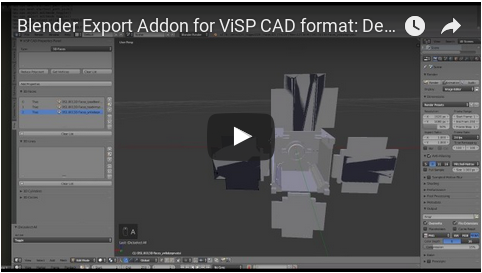

Trim/Extend Checkbox is selected, so the two nearest vertices to the intersect point are moved and de-duplicated forming a perfect 100% accurate intersect - in seconds.

Here I extrude the selected vertex 0.7 at 120 degrees using my PDT Extrude then I simply click PDT Intersect with the four vertices selected: Yes! been there, done that, but the accuracy is not 100% doing it this way and I got very frustrated at not being able to do it easily and quickly, so some pictures: I’m not sure if there’s a simple better way in Blender already It feels so silly but something the process of doing edge intersections is something I do a lot and the way I do it is by zooming in all the way and doing an edge slide until the center pixel of the vertex overlaps the line. This is something I’m passionate about too so hopefully I can help on this front soon. It’s so much harder to do it that way because projects seem to need a lot of momentum to get dev attention, but the ideal next step to me seems like CAD additions to master. I have to say though, one thing I’m worried about is the duplication of effort that can happen when this sort of essential work goes on in addons rather than master Blender. The existing measure tool only shows measurements when you’re in the active tool! I wish you luck in this project. I’m not sure if there’s a simple better way in Blender already, but I know this is being worked on as part of the snapping project and I can’t wait for it to make it in.Īnother frustration I face a lot is the lack of measurement objects like you were saying. It took my about 5 minutes, although I messed up the 4mm constraint and the right cutout ended up too deep. The dimensions were done with a very experimental method, although the text is not integrated yet, I still need an object that can hold edges and text. If you would like to post the blend file, I can check the accuracy… The reason for this strange request is that I am trying to optimally cover the Precision Modelling requirement for this type of construction and want to make sure I have got the function covered properly, so any help here would be gratefully received. I am a designer with CAD ingrained over many years, so it is interesting to see how a “Polygon Modeller” would approach this. I would be very interested in how long it takes and how you would do it, so please let me know as much as possible of your process.

Permitted accuracy from mathematical true is 0.000001mm and no calculators are allowed. Use only standard Blender and tell me how long it took. It doesn’t matter what the overall diameter is, or the length, I am just interested in the profile of the dimensioned bit, my overall diameter was 63mm, just to make it more awkward for me to make. I will investigate whether I can read dimensions from a DXF imported into Blender… Reading dimensions of a drawing used as a reference, now that would be good! You can enter them in the appropriate boxes by reading the drawing yourself, but that is probably not quite enough. I have also made it into a proper add-on stored in Blender addons directory and have solved the “Hotkey” issue, now SHIFT+P brings up the dialogue in both Edit and Object Modes - what a smartarse I am. As far as I can tell even in 2.8 Official, you cannot tell the order in which objects where selected, So I blocked that option for now, but all the rest work fine. For vertices there is a select_history, for Objects there is not. Here I have placed the cursor at the point where the active object would be normal to the other two.Ĭertain things won’t work of course, like Extrude, or Place Vert, or Join 2 Verts - there is an example of me “stating the bleeding obvious”… However, there is one issue that I cannot resolve and that is to use the Intersect commands as I don’t know in what order the selection of the objects was made.


 0 kommentar(er)
0 kommentar(er)
